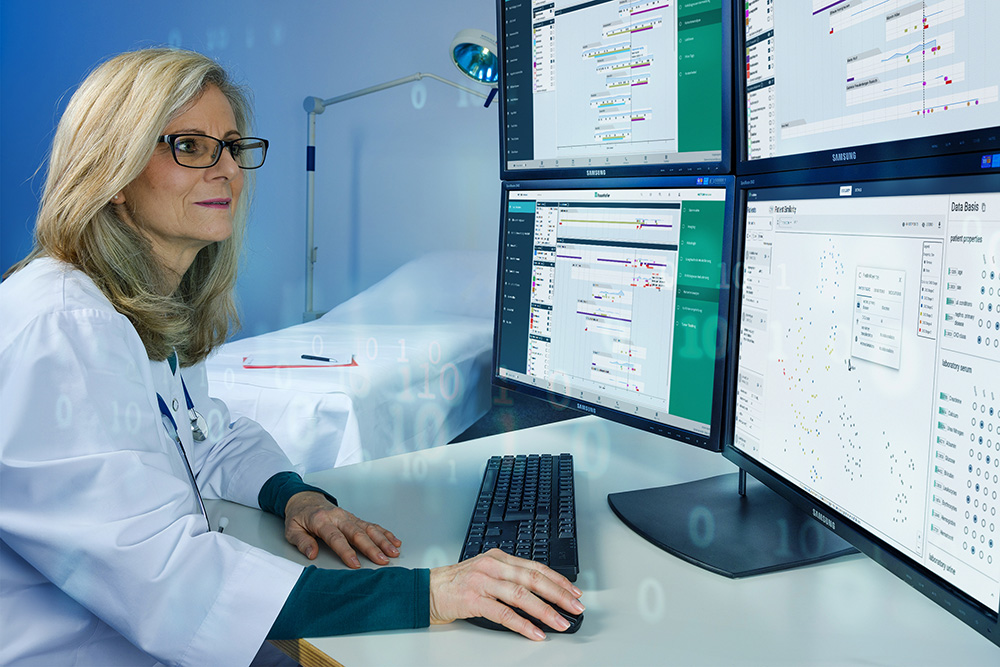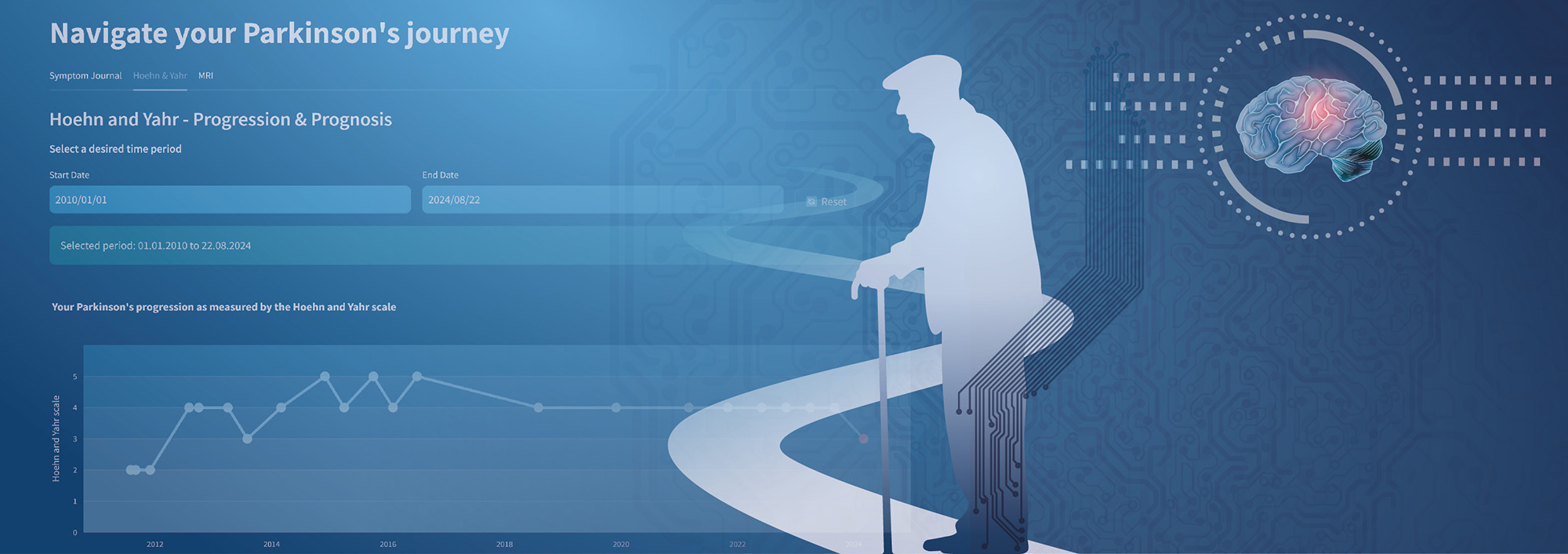Fraunhofer IGD presents solutions for the support of medical decision-makers
Making better data-based decisions
Vital data, imaging results and information about lifestyle: Comprehensive patient data is already available to healthcare professionals, but not always in a readily usable form. Fraunhofer IGD has set itself the target of making this data optimally available for the support of medical decision-making and also for the involvement of patients in their own treatment. At the DMEA in Berlin (9th - 11th April 2024), the Fraunhofer research team will be showcasing two new solutions, firstly a visual-interactive tool for cohort analysis in research, and secondly a Parkinson’s monitor which helps doctors and patients to better understand the course of the disease.

Darmstadt: “It should be possible for medical professionals to handle large amounts of data without unnecessary complication,” explains Professor Jörn Kohlhammer, Head of Information Visualization and Visual Analytics at the Fraunhofer Institute for Computer Graphics Research. “With this objective in mind, we are developing solutions that supplement the personal experience of these professionals by providing them with data-based support in their decision-making.” At the same time, the researchers are also taking a close look at patient needs. Dr. Stefan Wesarg, Head of the Visual Healthcare Technologies department explains: “If patients are confident and well-informed about their treatment, this noticeably improves their sense of well-being.”
Designing visually interactive medical studies
Discovering new correlations: Cohort analysis serves as the basis for personalized medicine. Researchers look for similarities between patients and link current treatment decisions with comparable cases in the past. Fraunhofer IGD has developed an analytical tool that provides researching physicians with visual-interactive support in classifying cohorts more precisely and examining the data for correlations between parameters.
Based on patient information, medical imaging and omics data (i.e. a wide range of information on changes at genetic or molecular level), information is compiled and processed for medical evaluation using AI. The focus is currently on nephrology and chronic inflammatory bowel diseases. Professor Jörn Kohlhammer: “In collaboration with the Fraunhofer Cluster of Excellence Immune-Mediated Diseases CIMD, we are further refining the technology for future use in the pharmaceutical industry.”
Data-based prognosis of the future course of disease
The Parkinson’s monitor is a dashboard for patients and treating physicians. The web application comprises a patient log, image data, an overview of the data over time and various other areas. From this, AI-based conclusions can be drawn about how the disease is likely to develop. In the future, it should also be possible to predict the side-effects of changes in medication.
Dr. Stefan Wesarg: “Especially when patients become incapable of independent action as the disease progresses, relatives can use the Parkinson’s monitor to better understand their situation.” In developing the monitor, Wesarg’s team used data from around 3,000 patients recorded in the Parkinson’s Progression Markers Initiative. The next stage will involve the solution being tested with a clinical partner on an actual patient group, not least to obtain feedback on user-friendliness.
Adaptable to different clinical pictures
Both Fraunhofer solutions – the cohort analysis tool and the Parkinson’s monitor – have one thing in common: although their current focus is on specific indicators, the expectation for the future is that they will be universally applicable to many different medical areas. In developing both projects, the team has paid particular attention to data protection. Both Kohlhammer and Wesarg work for the National Research Center for Applied Cybersecurity ATHENE, which is a research body of the Fraunhofer Institute under the direction of Fraunhofer SIT and with the participation of Fraunhofer IGD and three universities – TU Darmstadt, Goethe University Frankfurt and Darmstadt University of Applied Sciences.
 Fraunhofer Institute for Computer Graphics Research IGD
Fraunhofer Institute for Computer Graphics Research IGD